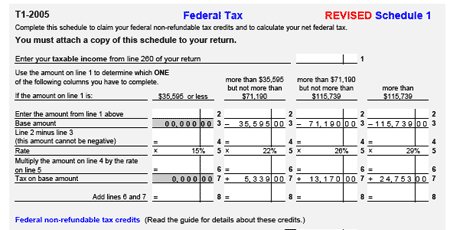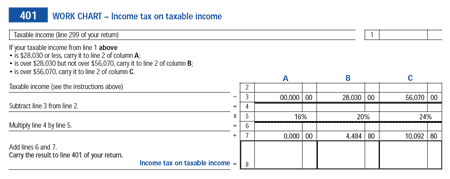
It’s tax time up north and the usual complaints are making the rounds. But this is the first year I’ve done my own taxes in Canada (we were too freaked out by the move to try it ourselves last year). And it’s actually a lot easier than American taxes. For one thing, there are many fewer things you can deduct. For instance, we could deduct the cost of supplies for Carrie’s insulin pump (not covered under McGill’s plan in 2005 but will be covered from here on out) from our Federal return but not our Quebec return because we make too much money. Some professorial expenses are deductible but thanks to the grant system, we’re not paying out of pocket for those. And the mortgage interest deduction is a dim memory.
But the other thing I like about the Canadian forms is the transparency of the tax brackets. In the US, you have that elaborate table at the end of the 1040 book and can’t really see how taxes are organized. Here, you have very simple calculations (I didn’t include the deductions here but you can look those up if you actually cared enough to look). You can see the tax brackets. For instance, the highest tax bracket in Quebec starts at just over $56,000. Which is a relatively low place for your top tax bracket to start. Well done, Quebec.

Now, before my local readers get all hot and bothered, yes I know that corporate income tax here is almost as completely hosed as it is south of the border, that income trusts give people giant loopholes from paying the government, and that there are probably 1000 other strategies of tax evasion for the rich. I also know that the system of high sales taxes here is quite regressive (as in, that 15% of sales tax matters less to me than to a poor person). But right or wrong, the forms allow me to imagine taxation here as a more progressive system than the American one, where the rich and even the merely well-to-do pay significantly more, proportionally, than the poor. And that’s how it ought to be.
